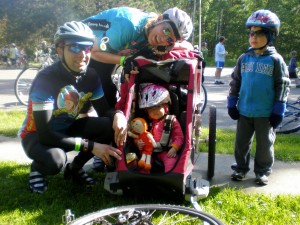Massive design update this morning. I think everything is working. If you note anything that is completely and wildly borked, please let me know via comment or contact.
Sincerely,
Julie

February 6, 2013
by julie
1 Comment
Massive design update this morning. I think everything is working. If you note anything that is completely and wildly borked, please let me know via comment or contact.
Sincerely,
Julie

February 5, 2013
by julie
Comments Off on Traffic Congestion & Gas Expense for Families Up in 2012: What to Do?
Two pieces of information came out today, separately. But together, they say a lot about societal priority:
The Texas A&M Transportation Institute’s 2012 Urban Mobility Report was released. In it, we learn that traffic jams in major US cities are getting worse. beyond rating the most congested cities, the report suggests that by 2020 the average US driver will spend 7 more hours/year stuck in traffic. Stats for MSP? 34 hours a year stuck in traffic.
The top 5 most congested cities are big ones — Washington DC, Los Angeles, San Francisco, New York and Boston. Four of five of these are known for excellent transit systems.
Depending on who you talk to, some would argue the solution is to add transport lanes to highways. Generally speaking, that’s a reactive strategy, and doesn’t address the challenge of then maintaining that infrastructure. Building is sexy, maintaining isn’t. And funding for either is messed up, especially as fuel standards have decreased fuel consumption, and a stagnant gas tax has also impacted funding via that channel. The federal gas tax of 18.4 cents/gallon was last raised in 1993, which is to say that pretty soon it can walk into a bar and have a beer. Congress has transferred $34.5 billion from other sources into the highway trust fund since 2008.
Another approach is to charge people for miles traveled, including toll roads, congestion-based pricing, etc. This is basic economics — because there is no price on roadway access (it’s free), overconsumption results.
Obviously, the challenge is that you can’t build out of this problem through highways alone. Transit and bike/ped is critical, and the intersection of bike/ped and transit is critical — transit extends the realistic reach of active transportation options. The secondary challenge is to find funding, and to combat the idea that “transit doesn’t support itself, the subsidy!”
Well, no. But neither do roads. And as Americans spend more time in traffic — and a greater share of household income on gas to sit in traffic — a solution is going to have to happen. And more highways, ring roads, and bridges that can’t be maintained are clearly failed approaches. A solid approach, including Complete Streets, transit, bike/ped, congestion pricing, and sensitivity to low-income families, is required. As is the political vision to make it happen.
I think it will happen, but it may happen in a backward-facing way, and not in a visionary way. We’ll be cleaning up the pieces of this mess for decades. #grump
The Minnesota Ironman Bike Ride, one of the first big t-shirt rides/recreational pain fests of spring, announced its move to Washington County for 2013.
After 13 years in Lakeville, the ride chose to move. In that 13 years, the area around the ride has grown increasingly developed, which has changed the nature of the routes over time. The Lakeville routes also led to some big hijinks, like the year on the run to Northfield the cross-winds sent everyone into ditches. Fun times. There has also been snow, rain, ice, 80 degree weather, and pretty much everything short of tornado or hurricane.
There’s no cause to expect the weather conditions to get less weird in WaCo, but the routes are going to be almost undoubtedly more rural again. And there shall be hills. Communities mentioned in the move announcement include Scandia (hills), Afton (hills), Stillwater (hills), Lake Elmo (not so much but you have to get in or out to the other places mentioned), Marine (hills) and Oak Park Heights (really happy to get a shout out and not just be the victim of the new St. Croix Bridge development, but that’s a different tale).
Aside from past history of dealing with Washington County law enforcement and finding them to be ignorant of bike statutes, I am a big fan of St. Croix Valley bike routes and look forward to the big move for Ironman.
September 21, 2012
by julie
Comments Off on Rally for the Old Cedar Bridge on Saturday 9/22/2012
Ah, the Old Cedar Bridge. A beloved and much needed link from Richfield/Bloomington to the south-of-river suburbs.
Closed to all but wildcats and scofflaws in 2002, the bridge is complicated to repair or replace, because it’s in a delicate wetland, and it’s considered a historic structure. It’s technically the property of the City of Bloomington, but runs through the federally-operated Fish and Wildlife Refuge. The city wants neither to own nor operate the bridge.
It’s been quite a saga — a replacement was funded in 2008, but never came about due to complexities, and funding shortfall ($2 million was funded, but practically speaking renovation is going to run a minimum of $5 million, because of the historic designation. The current pot is over $5 million, but it’s a true fact that projects like this never come in at the minimum.)
In the time since the bridge closed, light rail stations have opened in Bloomington, adding more utility for bike commuters who could potentially make it to the Bloomington stations and use transit to extend their journeys — an option that increases as the Central Corridor comes to life.
Supporters of the bridge are going to gather this Saturday at 11 AM. State Representative Ann Lenczewski of Bloomington and  Governor Mark Dayton are expected to be in attendance. This is something of a repeat of a similar rally held in 2007, which featured Representative Lenczewski and then-Governor Tim Pawlenty. Representative Lenczewski hopes to sponsor legislation to close funding gaps, and encourage the feds and Bloomington to make something happen.
The Hennepin County Bicycle Advisory Committee will be hosting this shin-dig and would love for concerned citizens who see the critical need for a river crossing through the central section of the 494 corridor to attend. The rally will be on the Bloomington side of the bridge, which is near Cedar Avenue and Old Shakopee Road.

September 18, 2012
by julie
Comments Off on San Francisco Bike Coalition Publishes Guide to Family Biking
 The San Francisco Bicycle Coalition has published a Family Biking Guide, and it’s pretty great.
The San Francisco Bicycle Coalition has published a Family Biking Guide, and it’s pretty great.
And it takes a bit for me to commit to that.
It really addresses cycling throughout the lifecycle of becoming a family, starting with pregnancy, and including biking to school and sports. While written with some elements that are specific to SF/California law, it is generally speaking a level-headed look at biking with kids, with specific sections for each stage — 0-9 months, 9 months – 3 years, pedaling with your kids, and getting them onto their own bikes.
Having biked pregnant, I can deal with their enthusiasm, as they do temper it with cautions about routing, feeling secure, and balancing a desire to ride with your actual condition throughout the pregnancy. Most of one pregnancy was winter for me, so I didn’t ride much, as winter riding is substantially less stable when you’re certain of your center of gravity, let alone when it’s in flux. My second pregnancy, I rode into the third trimester until I hit a point SF Bike describe in the guide:
If you find yourself hitting your stomach with your knees, you have likely reached the point where you simply don’t fit on your bike anymore. You may also find that your balance is off and you don’t feel safe riding anymore.
Yeah, that. Exactly.
The guide also admits that most equipment options for riding with infants and toddlers are pricey. This is important. In so many pieces about family biking, the cost of this equipment is glossed over, or compared with that of a car as a one-for-one replacement. For most parents, complete replacement of a car with a bike is not realistic, but going multi-modal may be achievable. As such, the cost of equipment cannot simply be dismissed as covered by eliminating a car. This guide doesn’t do an in-depth comparison, but also doesn’t come out swinging in the zone many families would find unrealistic. Huge plus for them.
In all, the guide is useful for parents and advocates not in San Francisco, and is an excellent model for other organizations to emulate — a reasonable, responsible guide that follows multiple life stages, with practical advice.